In Windows, you can hide drive letters in File Explorer. They will disappear from both the navigation pane and the This PC folder. This can be done with either Folder Options or a Registry tweak. Here is how.
Advertisеment
Windows 10 assigns an available drive letter to a new drive connected to the computer. The operating system goes through the alphabet from A to Z to find the first available letter to assign it to various drives. Historically, it reserves the drive letters A and B for floppy drives.
Modern Windows versions assign the C letter to the system partition which Windows is installed on. Even in a dual-boot configuration, Windows 10 displays its own system partition as C:.
![]()
Changing drive letters will allow re-arranging drives in the This PC folder. This can be useful after you add an extra drive or create a new partition. For example, you might want to change its drive letter to display it before the DVD drive. Also, when you change the drive letter of a USB drive, it will be assigned permanently. Often Windows 10 randomly changes the drive letter for external drives when you connect them, so this way you can make this process more predictable.
Tip: To change drive letters in Windows 10, refer to the article
How to Change Drive Letter in Windows 10
By default, Windows shows drive letters AFTER the drive labels (names) in the This PC / Computer folder. The user can prevent drive letters from being shown using Folder Options.
To hide drive letters in Windows 10, do the following.
- Open This PC in File Explorer.
- In the Ribbon user interface of Explorer, click File -> Change folder and search options.
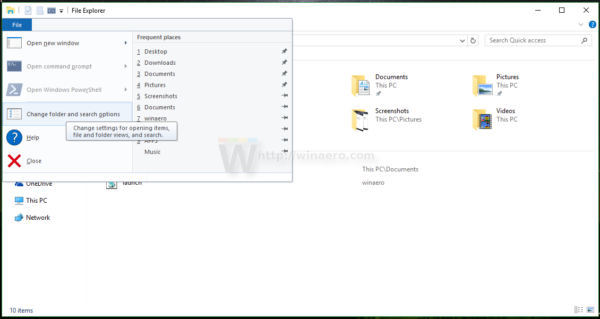
- Go to the View tab in Folder Options.
- Uncheck the option Show drive letters.
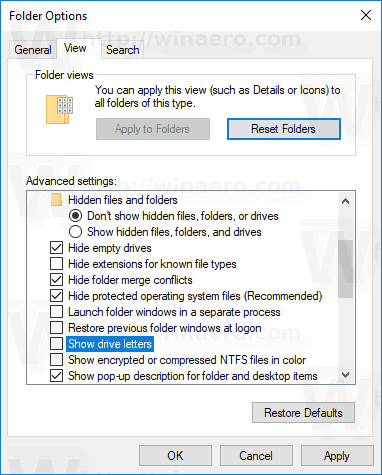
You are done! File Explorer will hide letters for all drives and show only their labels.
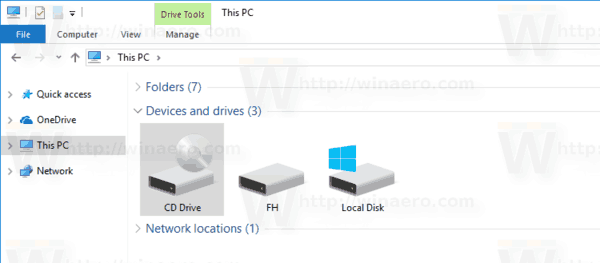
Tip: You can add the Folder Options button to Quick Access Toolbar. See the following article: How to add any ribbon command to the Quick Access toolbar of File Explorer.
Note: If you have disabled the Ribbon using a tool like Winaero Ribbon Disabler, press F10 -> click Tools menu - Folder Options.
The same can be achieved by applying a Registry tweak.
Hide drive letters with a Registry tweak
- Open Registry Editor.
- Go to the following Registry key:
HKEY_CURRENT_USER\SOFTWARE\Microsoft\Windows\CurrentVersion\Explorer
Tip: See how to jump to the desired Registry key with one click. - Here you must locate the ShowDriveLettersFirst value. If you cannot find it, just create a new 32-bit DWORD value and name it ShowDriveLettersFirst.
- Set the value data of the ShowDriveLettersFirst value according to the following rule:
0 - will show all drive letters after drive labels.
2 - will hide all drive letters.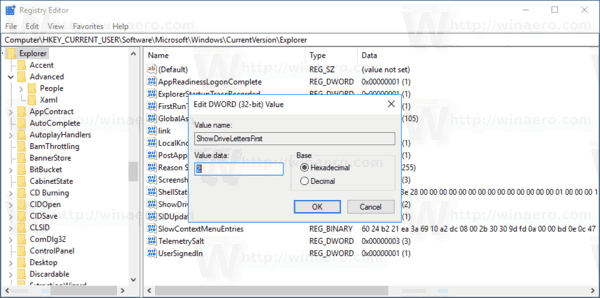
- To make the changes done by the Registry tweak take effect, you need to sign out and sign in to your user account. Alternatively, you can restart the Explorer shell.
Note: The ShowDriveLettersFirst parameter accepts a few more values which you use to make File Explorer show drive letters before drive labels.
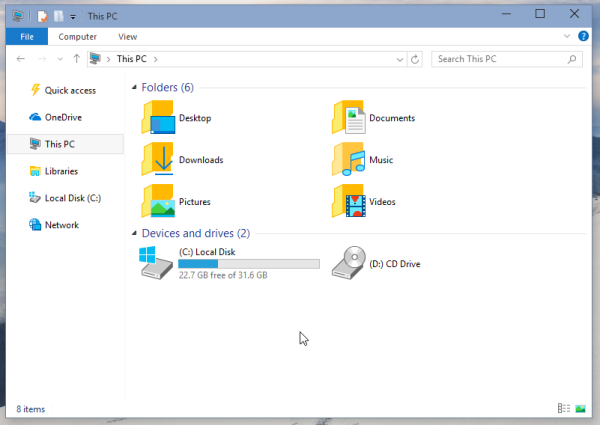
Refer to the article:
Show drive letters before drive names in This PC / Computer folder
Finally, you can hide specific drives in the This PC folder of File Explorer. The procedure is described in the article
How To Hide a Drive in Windows 10 File Explorer
That's it.
Support us
Winaero greatly relies on your support. You can help the site keep bringing you interesting and useful content and software by using these options:
